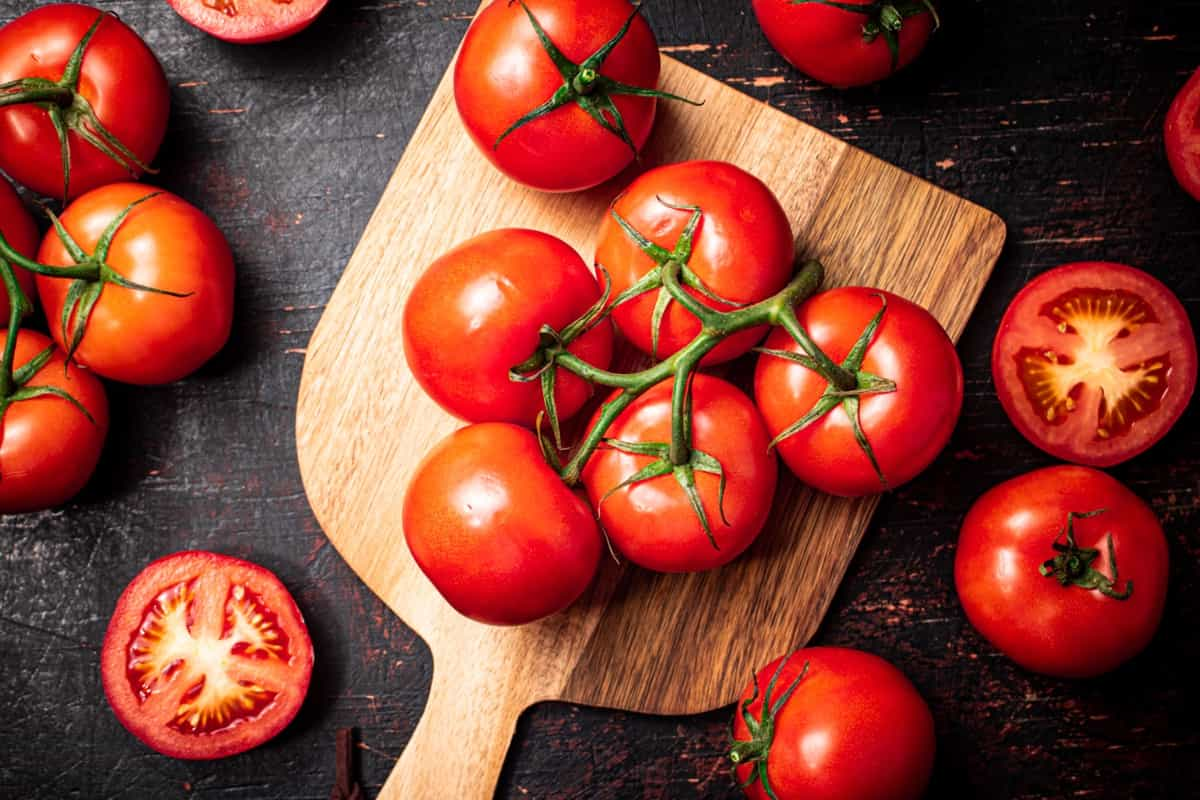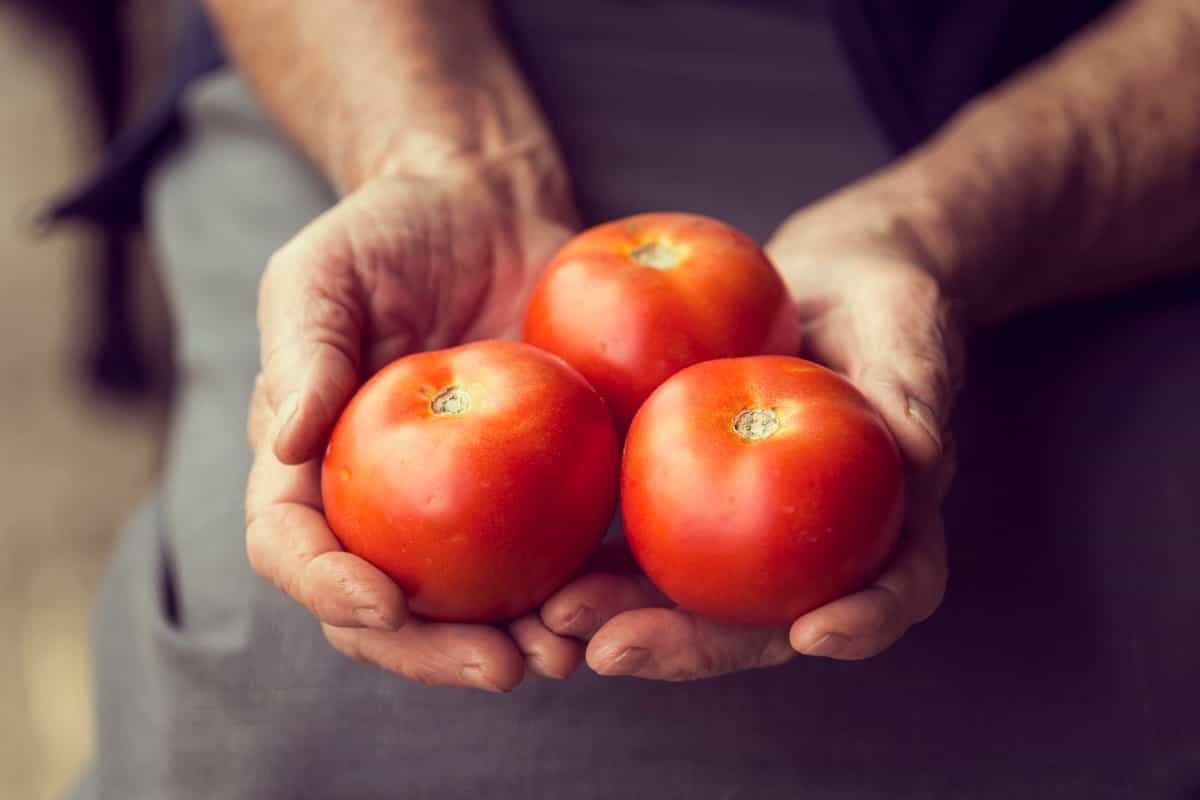Stupice tomatoes are a favorite among gardeners because of their flavor and early ripening characteristics. The Czech Republic is the place of origin for these little red or orange tomatoes. They bear a lot of fruit and do well in colder climates. Stupice tomatoes are excellent as an on-the-vine snack or in salads and sandwiches. They are a favorite among home gardeners and fresh food connoisseurs due to their sweet and tart taste.

Stupice Tomato Overview and Tips for Growing from Seed
Home gardeners frequently choose plump tomatoes. Czech in origin, these early-season tomatoes are prized for their small to medium size, usually with a diameter of 2 inches. They taste sweet and tart and are great in salads and sandwiches.
- Start IndoorsBegin planting Stupice tomato seeds indoors about 6–8 weeks before the last frost in your area.
- Use seed trays or pots filled with potting soil.
- Transplant Carefully Once seedlings are a few inches tall, transplant them into larger pots.
- Gradually harden them off by exposing them to outdoor conditions before planting them in your garden.
- Provide sturdy stakes or cages for support as they grow.
- Pest and Disease Control Monitor for pests like aphids and diseases like blight, and take prompt action to protect your plants.
The History and Origin of Stupice Tomato
Tragically, it is uncertain where the Stupice tomato originated. Nonetheless, the former Republic of Czechoslovakia was the source of the initial seeds. It is an heirloom tomato of unknown cultivar.
Stupice Tomato Size
Stupice tomatoes are about the size of a tennis ball or a small apple, with a diameter that usually ranges from 2 to 4 inches. Typically, these petite gems weigh between one and two ounces each. Their modest weight makes them easy to handle in the kitchen and garden, and their compact form makes them ideal for nibbling or providing fresh flavor to your favorite foods.
Stupice Tomato Plant Height
The Stupice tomato plant usually reaches 2 to 3 feet (60 to 90 centimeters) when fully developed. Because of its compact and bushy nature, this cultivar is good for smaller pots or gardens. Its tiny to medium-sized red tomatoes are excellent and easy to harvest, thanks to its moderate height. Stupice tomatoes are a favorite among gardeners seeking an early-season tomato yield because of their early maturity—they may often be harvested in 55 to 65 days.
Stupice Tomato Taste: Comparing Other Tomato Varieties
When compared to other tomato varieties, heirloom tomatoes are renowned for having a distinct flavor. They have a mildly acidic, sweet, and tangy flavor profile that is well-balanced. This is why Tomato fans love them so much. Because of their smaller size, Stupice tomatoes have a more concentrated flavor and are less watery than other tomatoes like beefsteak.
In case you missed it: How to Grow Tomatillo from Seed and How Tomatillo is Different from Tomato?

They are ideal for fresh salads because they have thinner skin. Because they ripen early in the season, plump tomatoes allow you to savor their flavor sooner. For this reason, Stupice is a great option if you’re seeking a tasty tomato that gets harvested early.
Characteristics and Features of Stupice Tomato
The Stupice tomato is a standout option for gardeners because of its distinctive qualities. Unlike many other tomato types, it can bloom and survive in colder temperatures, which is one of its most amazing qualities. This means that, unlike other tomatoes, it can be cultivated effectively in cold climes like those found in Alaska.
Renowned for its vigorous growth, the Stupice plant usually yields a bumper crop of tomatoes. Its unusual foliage, which resembles potato leaves, is remarkable. The Stupice tomato has potato-like leaves, which can look rather good in a garden, in contrast to the more popular tomato varieties with conventional, serrated leaves.
Climate and Growing Conditions for Stupice Tomato
Stupice tomatoes can be grown in USDA Hardiness Zones 3-11 and require a temperature range of 50-95 degrees Fahrenheit. They require six to ten hours of full sun daily but may need a shade cloth to prevent sunburn. Tomatoes prefer soil with a pH of 6.0-6.8, with a higher acid content. Loam and sandy loam are ideal soil types, while clay is the hardest to work with.
Soil tests can determine pH and nutrient levels. Tomatoes need daily watering, and before planting, cover the plant with two to three-inch layers of mulch. Water the base of the plant rather than the leaves to prevent sunscald and bacterial diseases. Each plant should receive one to one and a half inches of water.
Step-by-Step Guide to Growing Stupice Tomato from Seed
- Get Supplies: You’ll need Stupice tomato seeds, potting soil, small pots, and a sunny spot.
- Planting: Fill pots with soil, plant 2-3 seeds per pot, and cover lightly with soil.
- Watering: Keep soil moist but not soaked. Use a spray bottle or gentle watering.
- Sunlight: Place pots in a sunny spot or under a grow light for 6-8 hours daily.
- Transplant: Once seedlings have two true leaves, transplant them into larger pots or your garden.
- Fertilize: Use a balanced fertilizer every 2-3 weeks.
- Support: As they grow, provide support with stakes or cages.
- Harvest: In about 60-70 days, you’ll have delicious Stupice tomatoes to enjoy!
Choosing the Right Soil and Fertilizers for Stupice Tomatoes
The optimal soil for tomatoes is loose well-draining, with a pH of 6.0-6.8, with loam and sandy loam being the best options. Clay is the hardest soil to work with, but sand and compost can be amended. Spoiled tomatoes ripen early, so use a balanced fertilizer with equal amounts of potassium, phosphorus, and nitrogen. Reapply after planting and avoid overfertilization to avoid excessive growth. Regular watering will help tomatoes grow well and produce delicious early-season harvests.
In case you missed it: Hillbilly Tomato Overview: Taste, Size, History, Origin, Growing, and Yield

Watering and Irrigation Tips for Stupice Tomato Plants
Often, tomatoes need to be watered every day. Before beginning, cover your plant with two to three-inch layers of mulch, allowing three inches of space between the mulch and the plant’s base. Water the base of the plant rather than the leaves when watering, as this can lead to sunscald and bacterial diseases. Aim to give each plant one to one and a half inches of water weekly.
Pruning and Supporting Stupice Tomato Plants for Optimal Growth
Pinching and pruning are essential for improving tomato plants’ health and productivity. They are beneficial from the early growth stage when plants are 12-18 inches tall and have developed a few sets of leaves. Throughout the growing season, pruning and pinching help manage shape, encourage airflow, and reduce disease risk.
Benefits of pruning include increased airflow, better light penetration, and larger, more flavorful fruit. By removing excess leaves and suckers, the plant can better manage its shape and promote better light penetration, reducing the risk of fungal diseases like blight.
Common Pests and Diseases Affecting Stupice Tomato Plants
Common diseases and pests can affect dwarf tomato plants. Whiteflies and aphids are bothersome insects that can deplete their energy. Watch out for leaf scars caused by the fungal disease known as early blight. Use insecticidal soap to protect your Stupice tomatoes from bugs, and ensure adequate airflow to avoid fungal problems. Tender plants provide delicious tomatoes!
Harvesting and Enjoying the Fruits of Your Stupice Tomato Plants
Stupice tomatoes are renowned for having a comparatively short growth season. Whether you grow them indoors or outdoors, you may usually begin harvesting them 55–68 days after sowing the seeds. One of the reasons so many gardeners adore them is their short wait period. It means that after planting the seeds, you may start eating those delicious, homegrown tomatoes in salads and other dishes in only a few months, which makes them a wonderful option for both impatient gardeners and fresh food enthusiasts.
Stupice Tomato Yield per Plant
Stupice tomato plants are known for being quite productive. Each Stupice tomato plant can give you about 20 to 30 tomatoes during its growing season. This can vary depending on how well you care for the plant and the growing conditions, like sunlight and water.
In case you missed it: 10 Best Tomatillo Companion Plants for a Flourishing Garden

Conclusion
The flavor of stout tomatoes is described as being both sweet and acidic. They’re perfect for salads since they’re tiny—about the size of a golf ball. These robust tomatoes, native to Czechoslovakia, are ideal for novice gardeners to cultivate. They yield a respectable amount, so your garden will have a delicious and abundant harvest.
- Feed Your Flock for Less: Top 10 Tips to Save on Chicken Feed
- Ultimate Guide to Ossabaw Island Hog: Breeding, Raising, Diet, and Care
- Hatching Answers: The Top 10 Reasons Your Chickens Aren’t Laying Eggs
- Eggs and Economics: Breaking Down the Cost of Raising Backyard Chickens
- Defend Your Greens: Proven Methods to Keep Iguanas Out of Your Garden
- Ultimate Guide to Cinnamon Queen Chicken: A Comprehensive Guide for Beginners
- Ultimate Guide to California Tan Chicken: Breeding, Raising, Diet, Egg-Production and Care
- Ultimate Guide to Marsh Daisy Chicken: Breeding, Raising, Diet, and Care
- 10 Types of Chicken Farming Businesses You Can Start for Profits